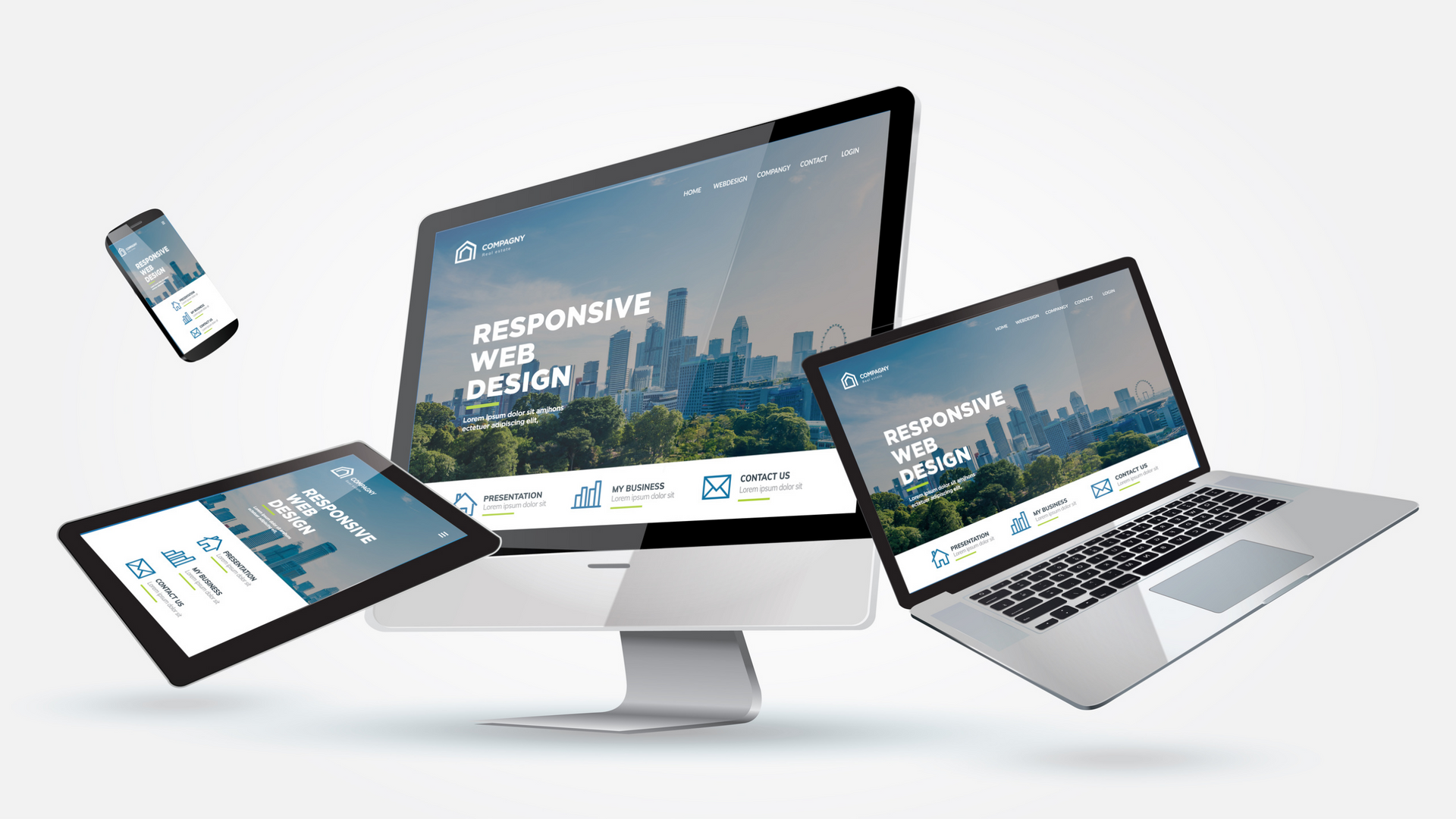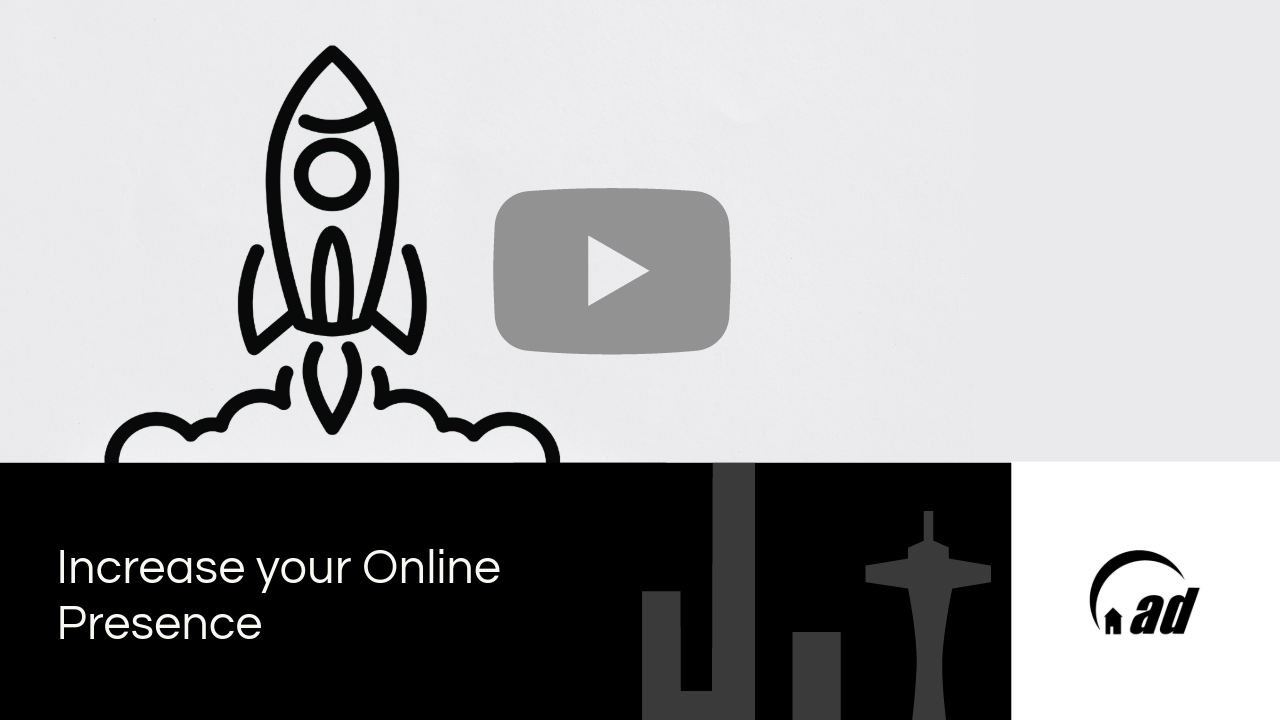Alec Allshouse is an artist, musician, and the founder of Allshouse Designs, a website management business that has designed, built, and promoted websites for small service-type companies since 2012. Since 1998, Alec has written many lines of code and has managed over 200+ websites.
How to Choose the Best Website Design Company in Seattle: 5 Tips for Small Business Owners
Are you looking for a website design company in Seattle to create an online presence for your small business? It can be difficult to determine which company is the ideal fit considering the multitude of options available. To help narrow the search, we've compiled a list of five essential tips to consider when selecting the right website design team for you. From experience and portfolio to customer service and pricing, we'll provide the info you need to make the best decision for your business. Read on to learn more about how to choose the best website design company in Seattle for your small business.
The Importance of Using a Professional Website Design for Small Businesses in Seattle
Hey there, Seattle small business owners! Are you looking to take your business to the next level? Then you'll want to make sure you have a professional website design. In this digital age, having a website is essential for any business, big or small. A website will help you reach more potential customers, showcase your services, and boost brand recognition. Plus, with a website design tailored specifically to Seattle businesses, you'll have the advantage of appealing to a local audience. Your website should reflect your business's unique personality and style, so seek an experienced web design team in Seattle to help you create the perfect website for your business. Don't wait – start building your online presence today!
For those interested in numbers, here are some statistics highlighting the importance of what we do.
- 94% of initial impressions of your company are based on the design of your website.
- 38% of website visitors will disengage if the content or layout is unappealing.
- 88% of online consumers are not likely to revisit a website after a negative experience.
- 75% of consumers assess a company's credibility by evaluating its website design.

Tip # 1: Determining Your Website Design Goals and Needs
A website is a successful way to connect with your target audience, making it more likely to achieve your business goals. However, you must determine your goals and needs before designing your website. Goals help you create a website that is effective, engaging and meets the needs of your target audience. Below are some steps to determine your business website design goals and needs.
- Identifying your target audience: Ask yourself, who are you trying to reach through your website? What are their needs and interests? What are their pain points? Once you connect with your audience, you can customize the design to suit their needs better.
- Define your website's purpose: What do you want your website to accomplish? Are you looking for leads, selling products, providing information, or something else? Once you know your website's purpose, you can start to develop specific goals for your website.
- Analyze your competition: What are other websites in your industry doing well? What could they be doing better? Analyzing your competition can help you identify best practices and areas where you can improve your website.
- Set SMART goals: Setting SMART (specific, measurable, achievable, relevant, and time-bound) goals is essential to track your progress and ensure you're on the right path.
- Consider your budget: How much are you willing to spend on your website design? Your budget will help you determine your project's scope and the features you can include.
- Research web designers: Once you know your goals and needs, you can research web designers. Look for designers who have industry experience and can understand your vision for your website.
- Work with a web designer: Once you have found a web designer, you can start working with them to bring your vision to life. Be clear about your goals and needs, and work with the designer to ensure your website meets your expectations.
Here are some additional tips for determining your business website design goals and needs:
- Consider your long-term goals: What will your website achieve in the next 12, 24 months, and beyond?
- Be realistic about your budget: To avoid future disappointment, having a realistic budget in mind for your website design project is crucial.
- Be flexible: As you work with your web designer, be prepared to change your original plans. Revisions are routine; you will likely learn more about your website's needs as the project progresses.
By using these tips, you to can create an effective website that is engaging and meets the needs of your target audience.
Tip # 2: Researching Website Design Companies in Seattle
When researching website design companies in Seattle, it pays to do your homework. You want to ensure you invest in a quality team that understands your business and will provide you with the best possible service. Start by looking for local companies with a strong portfolio of websites they have created. Consider the services they offer and ensure they match your goals. Ask for referrals and read reviews to understand the customer experience. Lastly, feel free to ask questions during the consultation to ensure you know what you are getting. You can find the perfect website design company in Seattle with the proper research.
With that said, who are the top designers in the great Pacific Northwest?
Efelle Creative is a web design and development agency serving the Seattle Metropolitan area for over 15 years. They specialize in custom responsive web design for mobile or desktop platforms. They also offer logo design, marketing and growth strategy, search engine optimization, and pay-per-click ad planning services. Efelle Creative has worked with large corporate clients, including Boeing, Weyerhaeuser, Pacific Medical Centers, Gateway Construction Services, and various small and local businesses.
Substantial is a digital agency specializing in web design, development, and marketing. They have a staff of experienced designers and developers who can create beautiful and functional websites. Substantial has worked with many clients, from startups to Fortune 500 companies.
If you have read the descriptions I put together for the top designers above, you will realize that they work with larger companies and charge the price for large companies.
Allshouse Designs offers a wide range of services to create a solid online presence, from domain services and website hosting to website design, search engine optimization, social media, content creation, copywriting, and more. Plus, the team at Allshouse Designs are expertly trained and equipped to build excellent sites for small businesses. With Allshouse Designs, you can trust you'll get the highest quality website design and online presence services.
Tip # 3: Ensuring Compatibility and Communication with the Website Design Company
When collaborating with a website design company, it's essential to ensure compatibility, have a shared understanding of your objectives, budget, and timeline, and have effective communication. To guarantee compatibility, ask the company about their experience working with similar clients and their process. Additionally, be clear about your expectations and the website features you desire. Communication is critical to any successful project, especially with a website design company. Being open and honest with the company about your needs and vision for your website is essential. It would be best if you were responsive to their feedback and suggestions. The best way to ensure you communicate effectively with the website design company is to set up regular check-ins. Checking in will allow you to discuss your progress and ensure you are on the same page. It is also essential to be clear about your communication preferences. Do you prefer to communicate via email, telephone, or video chat?
- Do your research. Before you hire a website design company, take some time to research their work and their reputation. This will help you find a company that fits your needs well.
- Get everything in writing. Once you have hired a website design company, get everything in writing, including the scope of work, the timeline, and the budget.
- Be prepared to compromise. No two people are exactly alike, so it is essential to collaborate and often compromise when working with a website design company. You don't have to give up on your vision; you may need to be willing to adjust your expectations a bit.
- Be patient. Creating a website takes time and effort. Be patient with the website design company and with yourself. The result will be worth it.
Tip # 4: Assessing the Website Maintenance and Support Offered by the Design Company
Are you looking for a website design that will keep your business running smoothly? Look no further than Allshouse Designs's website maintenance and support packages, located just NE of Seattle. Their experienced engineers and designers are committed to keeping your website running, from monitoring website performance to providing technical assistance. They also offer regular updates and security measures to ensure your website is always secure. You can trust them to take care of your website, ensuring it stays optimized and functional at its best. Don't wait any longer – take advantage of their superior website maintenance and support services today!
Tip # 5: The Role of SEO in Website Design and Development
SEO( search engine optimization) is designing a website to appear in searches or rank higher in search engine results pages (SERPs). When people search for keywords related to your site, it will appear more often at the top of the search results.
SEO is integrated with website design and development because it allows you to attract more visitors to your site. When people find your website through search engines, they are more likely to be interested in what you offer, which can lead to more sales, leads, or other conversions.
Several factors can affect a website's SEO, including the following:
- Keyword research: The first step in SEO is to research the keywords that people will likely search for products or services like yours. Once you know what keywords to use, you can place them throughout your website, including in your website's title, meta descriptions, and content.
- Content: The content on your website is one of the most critical factors for SEO. Your content should be informative, relevant, and well-written. It should also be keyword-rich but not too keyword-stuffed.
- Internal linking: links different pages on your website together, helping search engines crawl your website and understand how the other pages are related.
- Off-page SEO: Off-page SEO refers to your activities outside your website to improve its SEO, including building backlinks on your website from other reputable sites.
SEO is a complex and ever-changing field. However, following these tips and enhancing your website's SEO is always worth it to attract more visitors from search engine searches.
Here are some additional benefits of incorporating SEO into your website design and development:
- Increased website traffic: When your website ranks higher in search results, you increase the likelihood of more visitors looking for your offer.
- Improved brand visibility: When your website is more visible in search results, it will also be more visible to potential customers who are not actively searching for you, helping to increase your brand awareness and reach new customers.
- Improved website conversion rates: If your website shows up on search engines, it is likely that the visitors who find it will be interested in your content. Resulting in increased conversion rates, including more sales, leads, or sign-ups.
SEO is essential to your website design and development to grow your business online. By incorporating SEO into your website from the start, you can set your website up for success and attract more visitors from search engines.
In Conclusion
So there are five tips for choosing the best website design company in Seattle for small business owners. As a small business owner, it's essential to make sure that you choose the right company to build your website, as it will reflect both you and your business. Do your research, ask questions, and discuss the project details with any potential website designers. After all, it's your website, and it should be an accurate representation of your business. If you are looking for a reliable website design company in Seattle, look at Allshouse Designs. Our skilled professionals ensure you receive a premium website design experience. So what are you waiting for? Call Allshouse Designs to build your new website for your small business today!
About the Author
Share
Tips & Updates









